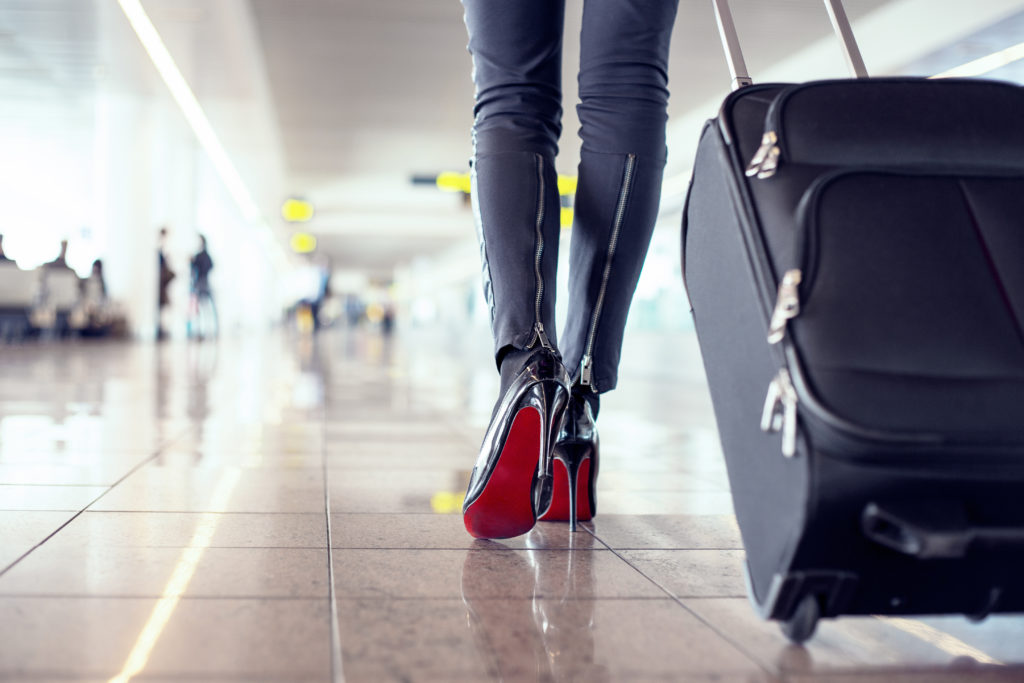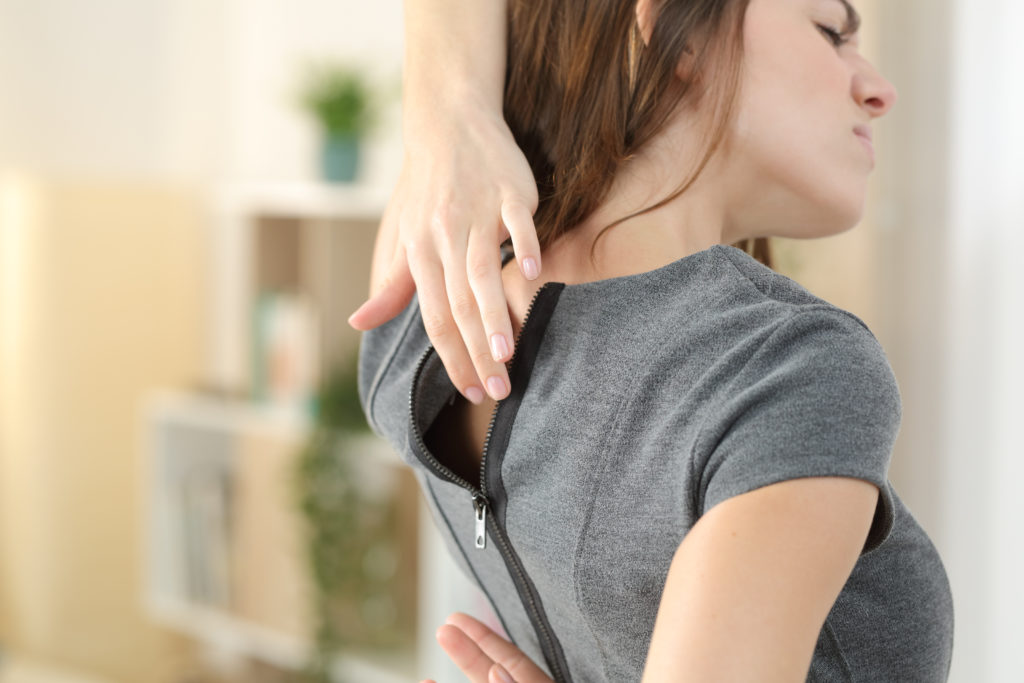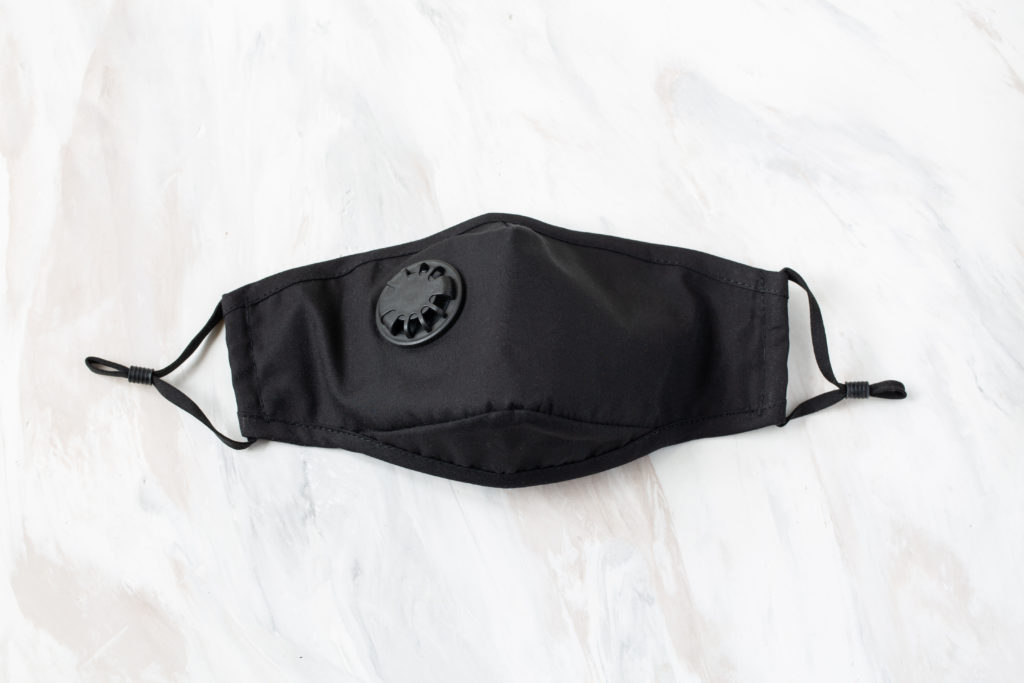The rules of in-flight fashion are different from those on the ground. When you're sitting for hours in a metal tube flying 35,000 feet in the air, comfort trumps style. Wear an outfit that keeps you cozy and relaxed, and you'll likely appear more chic than the traveler struggling with heavy bags in four-inch stilettos or the one sweating in too-tight synthetic fabrics. To look and feel your best while jet-setting, avoid the following in-flight fashion faux pas.
Some of the links featured in this story are affiliate links, and Airfarewatchdog may collect a commission (at no cost to you) if you shop through them.
Uncomfortable Shoes

This one seems obvious. Still, I've yet to board a plane without spotting at least one flyer tottering down the aisle in pumps. A good pair of comfortable shoes will make it easier for you to hoof it around the airport and sprint to the gate if you need to make a connection. Furthermore, wearing your bulkier shoes instead of stashing them in your suitcase while donning sandals or stilettos will free up some room—and some weight—in your checked or carry-on bag.
Complicated Shoes
Lace-up boots, strappy heels, sandals with more buckles than you can count - they're the nightmare of every in-a-rush business traveler who must stand behind you as you undo myriad straps and laces. Wear simple slip-on shoes or sneakers when flying, as you'll have to take them off in the airport security line.
Related: The 10 Most Comfortable Men's Walking Shoes for Travel
Fabrics That Don't Breathe
Shun any fabrics that lack breathability, such as nylon or leatherette. Add your rubber raincoat or waterproof jacket to this list as well. (Note, however, that some high-quality waterproof jackets, like outerwear made from Gore-Tex, are quite breathable. It all depends on what it's made of.) Less breathable fabrics hold sweat on the skin when it's hot as well as prevent air circulation. You won't feel very fashionable sweating in too-tight, synthetic clothes as your plane rests on the tarmac under the hot sun.
A foolproof way to find breathable clothes for the plane: Stick with moisture-wicking activewear (I recommend Prana) or clothes sold from travel suppliers like Magellan's, which are designed specifically for travel.
Related: What to Wear When Flying First Class
Tight Clothing
Have you heard of deep vein thrombosis? Also known as DVT, this condition occurs when dangerous blood clots form in veins. Those blood clots can lead to a pulmonary embolism, which is potentially fatal. According to the University of Washington Medical Center, sitting for long periods of time can increase the risk for DVT, and so can constrictive clothing: "Avoid tight clothing, nylons, or socks (especially the type that are too tight at the top and/or leave marks on your skin) that might restrict blood flow through veins." Compression stockings are a good choice for travelers interested in taking further steps to reduce the likelihood of DVT.
Complicated Clothing

Aircraft lavatories are tiny contrivances, about the size of a small closet or a very large Manhattan apartment. So maneuvering in and out of your pants can be, well, tricky. (That's why someone invented Claspies.) Lest you drop your wallet in the toilet or fall and smash through the bathroom door, wear something that isn't likely to cause difficulties in the plane bathroom. Avoid bodysuits or complicated wrap shirts or dresses, as well as long pants or skirts that may graze the unsanitary (and often disturbingly wet) lavatory ground.
Related: 8 Things You Should Never Do in an Airplane Bathroom
Contact Lenses
According to Frommer's, "The air in plane cabins is so dry (usually 10 percent to 20 percent humidity, sometimes as little as 1 percent, compared to the Sahara desert's 20 percent to 25 percent humidity) that your health is challenged every time you fly." Contacts can become uncomfortable to wear if your eyes dry out in the arid cabin, so either avoid them altogether or bring a pair of glasses to change into.
Perfume
Avoid this one for the good of your fellow passengers. Strong-smelling perfumes, colognes, body sprays, and so on shouldn't be worn in flight. Some passengers may find your CK One offensive; others might suffer allergic reactions to synthetic fragrances. If you really must smell of the finest department-store brands upon arrival in your destination, pack a sample size and apply it once you land.
Warm-Weather Clothing
The key here is layers. It's fine to wear lightweight fabrics on a plane. It may even be a smart strategy if you're flying to or from a sweltering climate. But planes are often very cold—and blankets aren't exactly freely distributed on many flights these days. So fight the air-conditioned chill by layering up.
Getting warm? Remove a few layers, bundle them, and then use them as a pillow.
Bonus: The more layers you can pile on your body, the less clothes you need to pack in your suitcase.
Related: Travel Clothes That Do Double Duty
Offensive or Inappropriate Clothing
Carriers typically leave it up to flight attendants to judge whether a passenger's garb is inappropriate for wear in the air. So how do you know if your outfit is appropriate? Learn from the past: Passengers have been removed from planes for wearing everything from low-cut dresses to baggy pants to T-shirts splashed with expletives. If you can't wear it to church or dinner with your mother-in-law, you probably shouldn't wear it on a flight.
A Mask with Vents or Valves

As anyone flying in 2022 knows, masks are an absolute must. However, some types of masks may not be allowed on your flight. Airlines are increasingly banning masks with ventilation valves aboard their aircraft, with carriers such as American Airlines, Alaska, Delta, Frontier, JetBlue, Southwest, Spirit, and United implementing policies to that effect. According to the Center for Disease Control and Prevention (CDC), these valves "may allow your respiratory droplets to escape and reach others." Be respectful of your in-flight neighbors and help keep everyone safe by wearing the proper face covering for the duration of your flight. You can find further mask recommendations from the CDC here.
This article was originally published by SmarterTravel under the title 9 Things Not to Wear on a Plane.





